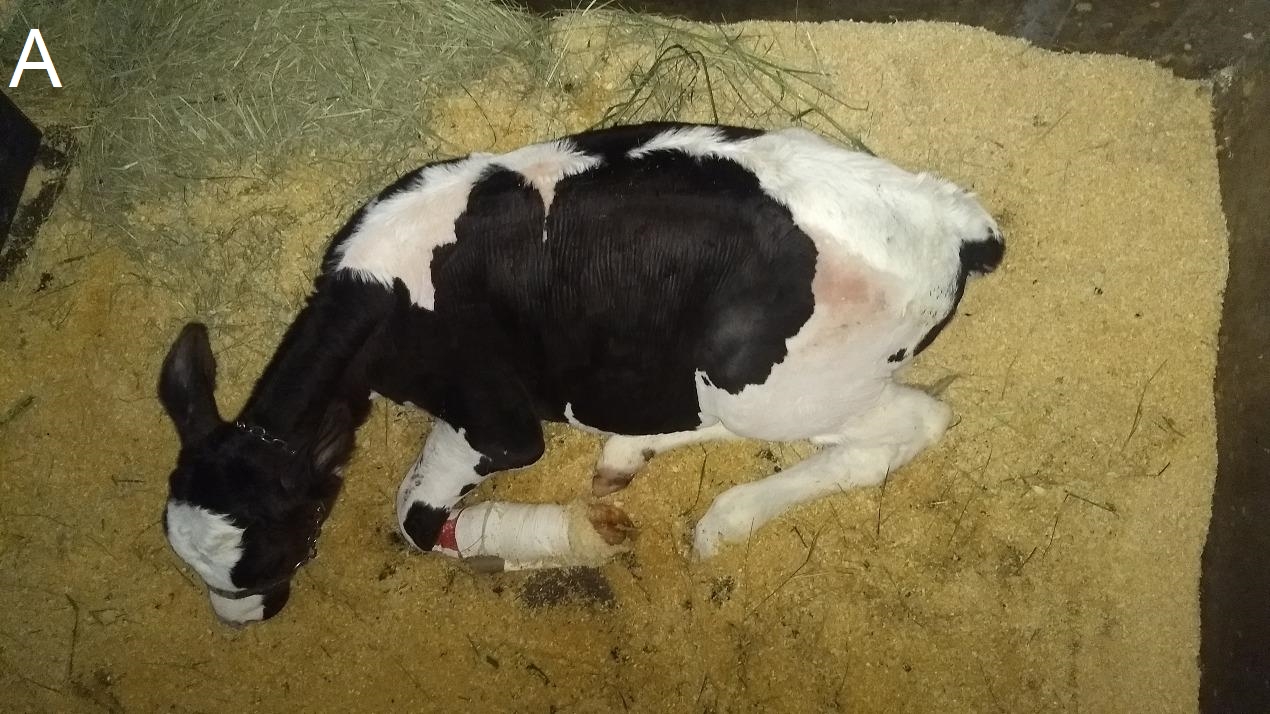Abomasal bloat in Holstein calf
DOI:
https://doi.org/10.21708/avb.2020.14.3.9312Resumen
This paper reports a case of abomasal bloat in a Holstein heifer, after an episode of the complete fracture of the left thoracic limb, which occurred on the farm. The animal, with 15 days of age, was donated to Veterinary Teaching Hospital (Hovet) of Faculty of Veterinary Medicine and Animal Science of University of Sao Paulo (FMVZ/USP) where it was operated, resulting in a complete fracture consolidation and no post-surgical complications. At 52 days of age, the heifer manifested acute apathy, anorexia, abdominal discomfort, and diarrhea. After physical and complementary (i.e., blood count and abdominal ultrasound) examinations and the assessment of nutritional management, the calf was diagnosed with abomasal bloat. Therefore, the following treatment was performed: correction of dehydration, antibiotic therapy, administration of a non-steroidal anti-inflammatory drug, and attempt of gas release through the esophageal tube. Moreover, dietary adjustments were made and consisted in interrupting the supply of concentrate, decreasing the volume of milk replacer, as well as supplying ruminal liquid, water, and green grass. Despite the acute and fatal characteristics seen in abomasal tympanism, the rapid identification of the initial clinical manifestations presented by the heifer allowed immediate therapeutic intervention, culminating in the survival of the animal and complete recovery at the end of the treatment.
Descargas

Descargas
Publicado
Número
Sección
Licencia
Autores que publicam na Acta Veterinaria Brasilica concordam com os seguintes termos: a) Autores mantém os direitos autorais e concedem à revista o direito de primeira publicação, com o trabalho simultaneamente licenciado sob a Licença Creative Commons Attribution que permite o compartilhamento do trabalho com reconhecimento da autoria e publicação inicial nesta revista. b) Autores têm autorização para assumir contratos adicionais separadamente, para distribuição não-exclusiva da versão do trabalho publicada nesta revista (ex.: publicar em repositório institucional ou como capítulo de livro), com reconhecimento de autoria e publicação inicial nesta revista. c) Autores têm permissão e são estimulados a publicar e distribuir seu trabalho online (ex.: em repositórios institucionais ou na sua página pessoal) a qualquer ponto antes ou durante o processo editorial, já que isso pode gerar alterações produtivas, bem como aumentar o impacto e a citação do trabalho publicado (Veja O Efeito do Acesso Livre).


 Esta obra está licenciada com uma Licença
Esta obra está licenciada com uma Licença 